News
What Is A Tft Lcd Screen?

What Is A Tft Lcd Screen?
Content Menu
● A Brief History of TFT LCD Technology
● Understanding the Structure of a TFT LCD Screen
● How TFT LCDs Work: A Step-by-Step Explanation
● Advantages of TFT LCD Screen
● Disadvantages of TFT LCD Screen
● Applications of TFT LCD Screen
● Innovations and Future Trends
● Q&A
>> 1. What does TFT stand for?
>> 2. How does a TFT LCD differ from a regular LCD?
>> 3. What are the main applications of TFT LCD screen?
>> 4. What are the advantages of TFT LCD screen over other display technologies?
>> 5. What are some of the limitations of TFT LCD screen?
Introduction
DINGTouch: In today's world, electronic devices have become an indispensable part of our daily lives. From smartphones and laptops to televisions and digital signage, we are constantly surrounded by screens. Among the various display technologies available, the Thin-Film-Transistor Liquid Crystal Display (TFT LCD) stands out as a dominant force, offering a compelling combination of image quality, energy efficiency, and versatility. This article aims to provide a comprehensive exploration of TFT LCD screen, covering their history, structure, working principle, applications, advantages, disadvantages, and future trends.


A Brief History of TFT LCD Technology
The development of TFT LCD technology is a fascinating journey that spans several decades, marked by significant breakthroughs and innovations. Understanding this history provides valuable context for appreciating the current state of TFT LCD technology.
Early Innovations
The foundation of TFT technology can be traced back to the mid-20th century when researchers began exploring the potential of thin films in electronic devices. In February 1957, John Wallmark of RCA filed a patent for a thin film MOSFET. Paul K. Weimer, also of RCA, implemented Wallmark's ideas and developed the thin-film transistor (TFT) in 1962, a type of MOSFET distinct from the standard bulk MOSFET. It was made with thin films of cadmium selenide and cadmium sulfide[1].
The Birth of TFT LCD
The idea of a TFT-based liquid-crystal display (LCD) was conceived by Bernard Lechner of RCA Laboratories in 1968[1]. In 1971, Lechner, F. J. Marlowe, E. O. Nester and J. Tults demonstrated a 2-by-18 matrix display driven by a hybrid circuit using the dynamic scattering mode of LCD. In 1973, T. Peter Brody, J. A. Asars and G. D. Dixon at Westinghouse Research Laboratories developed a CdSe (cadmium selenide) TFT, which they used to demonstrate the first CdSe thin-film-transistor liquid-crystal display (TFT LCD). Brody and Fang-Chen Luo demonstrated the first flat active-matrix liquid-crystal display (AM LCD) using CdSe TFT in 1974, and then Brody coined the term "active matrix" in 1975.
Maturation and Dominance
The subsequent decades witnessed continuous improvements in TFT LCD technology, driven by advancements in materials science, manufacturing processes, and display design. Amorphous silicon (a-Si) TFT LCD emerged as the first commercialized TFT technology, gaining widespread adoption due to their simple manufacturing process, good stability, and low cost. By 2013, most modern high-resolution and high-quality electronic visual display devices used TFT-based active matrix displays.
Competition and Evolution
As of 2024, TFT LCD display are still dominant, but compete with OLED for high brightness and high resolution display, and compete with electronic paper for low power display. Innovations continue to refine TFT LCD technology, enhancing touch capabilities, improving energy efficiency, and enabling custom solutions for diverse applications.
Understanding the Structure of a TFT LCD Screen
A TFT LCD screen is a complex assembly of multiple layers, each playing a crucial role in producing high-quality images[3]. Let's delve into the structure of a typical TFT LCD panel:
1. Backlight: The backlight unit is the source of illumination for the display. It typically consists of cold cathode fluorescent lamps (CCFL) or, more commonly today, light-emitting diodes (LED). The backlight emits white light that passes through the subsequent layers of the LCD.
2. Polarizers: Polarizers are optical filters that allow only light waves vibrating in a specific direction to pass through. A TFT LCD panel has two polarizers, one on the front and one on the back, oriented perpendicularly to each other. This arrangement ensures that light can only pass through when the liquid crystals are aligned in a specific way.
3. Glass Substrates: TFT LCD consist of two glass substrates between which the liquid crystal material is filled. These substrates provide structural support and serve as a foundation for the other layers.
4. Thin-Film Transistor (TFT) Layer: The TFT layer is the heart of the active matrix LCD. It consists of an array of microscopic transistors, each controlling the voltage applied to a corresponding sub-pixel. The TFTs act as switches, precisely regulating the amount of light passing through each sub-pixel.
5. Liquid Crystal Layer: The liquid crystal material is the key component that modulates the light passing through the display. Liquid crystals are organic molecules that can align themselves in response to an electric field. By controlling the electric field applied to the liquid crystals, the amount of light transmitted through each sub-pixel can be precisely controlled.
6. Color Filter Layer: The color filter layer is responsible for generating the red, green, and blue (RGB) sub-pixels that combine to create the full-color image. The color filter consists of tiny red, green, and blue filters arranged in a mosaic pattern.
7. Alignment Layers: Alignment layers are thin films that coat the inner surfaces of the glass substrates. These layers are treated to create microscopic grooves that align the liquid crystal molecules in a specific direction when no electric field is applied.
How TFT LCD Work: A Step-by-Step Explanation
The operation of a TFT LCD screen involves a coordinated interplay of its various components. Here's a step-by-step explanation of how a TFT LCD works:
1. Backlight Illumination: The backlight emits white light, which is unpolarized (i.e., the light waves vibrate in all directions).
2. Polarization: The light passes through the rear polarizer, which filters out all light waves except those vibrating in a specific direction. The light becomes polarized.
3. Liquid Crystal Modulation: The polarized light enters the liquid crystal layer. The TFT array controls the electric field applied to each sub-pixel, which in turn controls the alignment of the liquid crystal molecules. When no electric field is applied, the liquid crystals align in a way that rotates the polarized light by 90 degrees.
4. Color Filtering: The rotated light passes through the color filter layer, which separates the white light into its red, green, and blue components. Each sub-pixel allows only its corresponding color to pass through.
5. Light Transmission: The light then passes through the front polarizer. If the liquid crystals have rotated the light by 90 degrees, the light will pass through the front polarizer. If the liquid crystals have not rotated the light, the light will be blocked by the front polarizer.
6. Image Formation: By controlling the voltage applied to each sub-pixel, the TFT array can precisely control the amount of red, green, and blue light transmitted through each sub-pixel. This allows the display to create a wide range of colors and shades, forming the final image.
Advantages of TFT LCD Screen
TFT LCD screen offer several advantages over other display technologies, contributing to their widespread adoption:
-High Resolution: TFT LCD can achieve high pixel densities, resulting in sharp and detailed images.
-Brightness: TFT LCD are capable of producing bright images, making them suitable for use in various lighting conditions.
-Color Accuracy: TFT LCD can accurately reproduce a wide range of colors, providing a visually pleasing experience[6].
-Fast Response Time: The active matrix design of TFT LCD enables fast response times, reducing motion blur and ghosting.
-Energy Efficiency: Compared to older display technologies like CRT, TFT LCD consume less power[10].
-Slim Profile: TFT LCD can be made very thin and lightweight, making them ideal for portable devices.
Disadvantages of TFT LCD Screen
Despite their advantages, TFT LCD screen also have some limitations:
-Viewing Angle: The image quality of TFT LCD can degrade when viewed from an angle. This is due to the way the liquid crystals align and the polarization of light.
-Black Levels: TFT LCD typically struggle to produce deep black levels, resulting in a lower contrast ratio[6].
-Manufacturing Complexity: The manufacturing process of TFT LCD is complex and requires specialized equipment, leading to higher production costs.
-Potential for Dead Pixels: Due to the large number of transistors in the TFT array, there is a possibility of dead pixels (pixels that do not turn on or off) occurring.
Applications of TFT LCD Screen
TFT LCD screen find applications in a wide array of devices and industries:
-Smartphones, Tablets, and Laptops: These are perhaps the most common applications of TFT displays due to their high pixel density and energy efficiency.
-Television Sets and Computer Monitors: TFT LCD have become the norm for TVs and monitors, offering superior image quality and energy efficiency compared to their predecessors.
-Automotive Display: Used in dashboard displays, GPS systems, and entertainment systems, providing drivers and passengers with a clearer and safer user experience.
-Medical Equipment: Critical in medical devices, including patient monitors and imaging systems, where precision and reliability are paramount.
-Industrial Systems: Applied in machine interfaces and process controls, where clear displays are necessary for monitoring and operation efficiency.
-Military and Defense: Ruggedized displays for command centers, field operations, and vehicle-mounted systems, complying with MIL-SPEC standards for durability and sunlight readability.
-Marine and Offshore: Navigation systems, control panels, and entertainment systems aboard ships, featuring waterproof and corrosion-resistant designs.
-Public Information Systems: For advertising displays, digital signage, and informational kiosks in public spaces, ensuring legibility and visibility in various lighting conditions.
Innovations and Future Trends
The field of TFT LCD technology is constantly evolving, with ongoing research and development focused on addressing its limitations and expanding its capabilities:
-Enhanced Touch Capabilities: Integration of capacitive touchscreens that offer multi-touch capabilities and gesture recognition.
-Improved Energy Efficiency: Development of LED backlit displays which consume less power and offer a brighter display.
-Flexible Displays: Research into flexible substrates and materials that could enable the creation of foldable and rollable TFT LCD screen.
-Quantum Dot Technology: Incorporation of quantum dots to enhance color gamut and brightness.
-Mini-LED and Micro-LED Backlights: Using smaller LED to enable more precise control over local dimming, improving contrast ratio and black levels.
Conclusion
TFT LCD screen have revolutionized the way we interact with electronic devices, providing a visually rich and versatile display solution for a wide range of applications. From their humble beginnings to their current dominance, TFT LCD have undergone remarkable advancements, driven by continuous innovation and refinement. While competing technologies like OLED are emerging, TFT LCD continue to evolve, incorporating new features and improvements that ensure their relevance in the ever-changing landscape of display technology. As we move forward, we can expect to see even more innovative applications of TFT LCD screen, shaping the future of visual communication and information display.

Q&A
1. What does TFT stand for?
TFT stands for Thin-Film Transistor. It is a type of transistor technology used in LCD to improve image quality, such as addressability and contrast.
2. How does a TFT LCD differ from a regular LCD?
A TFT LCD is a type of active-matrix LCD, while a regular LCD can be either passive-matrix or active-matrix. TFT LCD use thin-film transistors to control each pixel individually, resulting in faster response times, better contrast, and wider viewing angles compared to passive-matrix LCD.
3. What are the main applications of TFT LCD screen?
TFT LCD screen are used in a wide range of devices, including smartphones, tablets, laptops, TV, computer monitors, automotive displays, medical equipment, industrial systems, and public information systems.
4. What are the advantages of TFT LCD screen over other display technologies?
TFT LCD screen offer several advantages, including high resolution, brightness, color accuracy, fast response time, energy efficiency, and a slim profile.
5. What are some of the limitations of TFT LCD screen?
Some limitations of TFT LCD screen include viewing angle dependency, difficulty in producing deep black levels, manufacturing complexity, and the potential for dead pixels.
For more details or inquiries, feel free to contact us directly at: sales@szdingtouch.com.
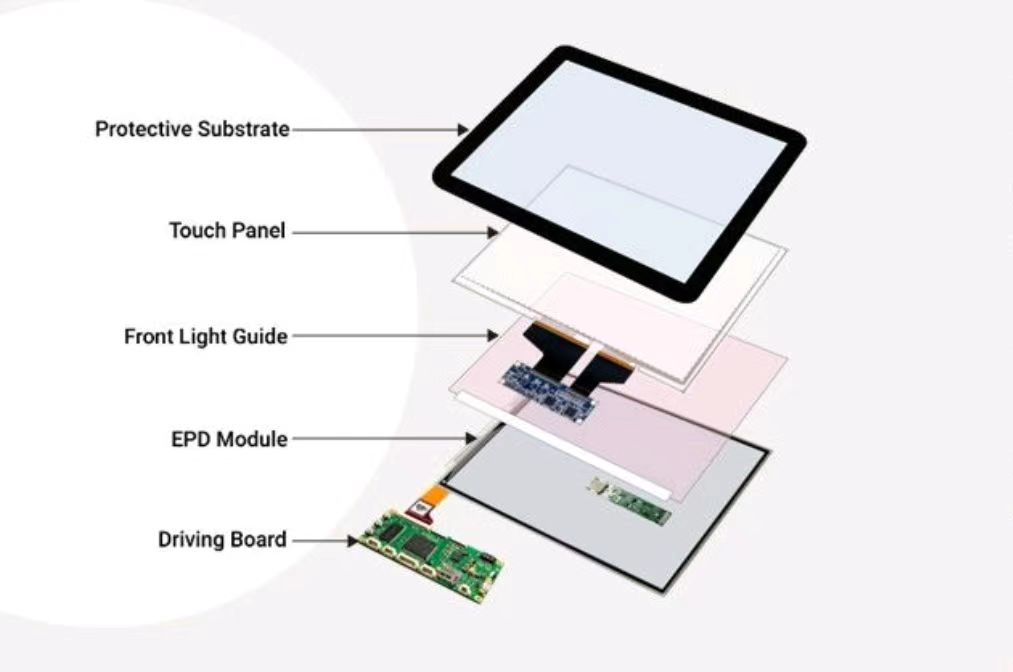
DINGTouch: Committed to continuous innovation and improvement of product quality to meet customers' high requirements and expectations.
DINGTouch is a manufacturer that provides high quality touch screen panels. Focus on the design, manufacturing and sales of touch screen panels, and are committed to providing customized solutions that satisfy customers.
DINGTouch: In the process of customizing touch screen panels, we focus on close cooperation and communication with customers. Understanding customers' needs and providing customized solutions will meet customers' individual needs. The company's products are favored by customers for their high quality and reliability, and provide them with the best touchscreen panel solutions.
At DINGTOUCH, we are the world's leading touchscreen manufacturer, helping businesses around the world take advantage of this exciting technology. For more information, please visit the home page now.
Find the DINGTouch technical team to achieve the success of your company's new project.
How to choose touch screen customization?
DINGTouch is a company specializing in the R&D and production of touch screen technology, headquartered in Shenzhen, China. As a professional touch screen supplier, DINGTouch is committed to providing high-quality, stable and reliable touch screen products to meet the diverse needs of customers. We continue to carry out technological innovation and product optimization to ensure that its touch screen products have good sensitivity, accuracy and durability.
In addition to the products themselves, we also focus on cooperation and communication with customers, and are committed to providing customized solutions and excellent after-sales services. Through continuous efforts to improve product quality and customer satisfaction, we have established a good reputation in the touchscreen industry and won widespread market recognition.

What DINGTOUCH can do:
• PCAP maximum size 65”
• Multi-touch (Touch screen can be customized to your needs.)
• Optical bonding service/air bonding
• LCD interface: HDMI/RGB/MIPI/LVDS/EDP, etc.
• PCAP interface: IIC/USB interface
• CTP can customize the cover glass surface treatment process AG (anti-glare), AR (anti-reflection), AF (anti-fingerprint), waterproof, and glove touch
• Supports 0.55 mm-12 mm coverslip touch.
• Support operating temperature: -40℃-90℃.
Dingtouch Industrial Capacitive Touch Screen Manufacturer
In conclusion, Dingtouch as a professional touch screen manufacturer with more than 10 years touch screen experience.We have many capacitive touch screen. Such as5 inch touch screen,7 inch touch screen,10.1inch touch screen,15 inch touch screen,15.6 inch touch screen,17 inch touch screen,18.5 inch touch screen,19 inch touch screen,21.5 inch touch screen,32 inch touch screen, However, we also welcome to customize your own touch screen . Contact our team today to learn what capacitive touch screen are best for our retail business needs.
Contact us NOW! sales@szdingtouch.com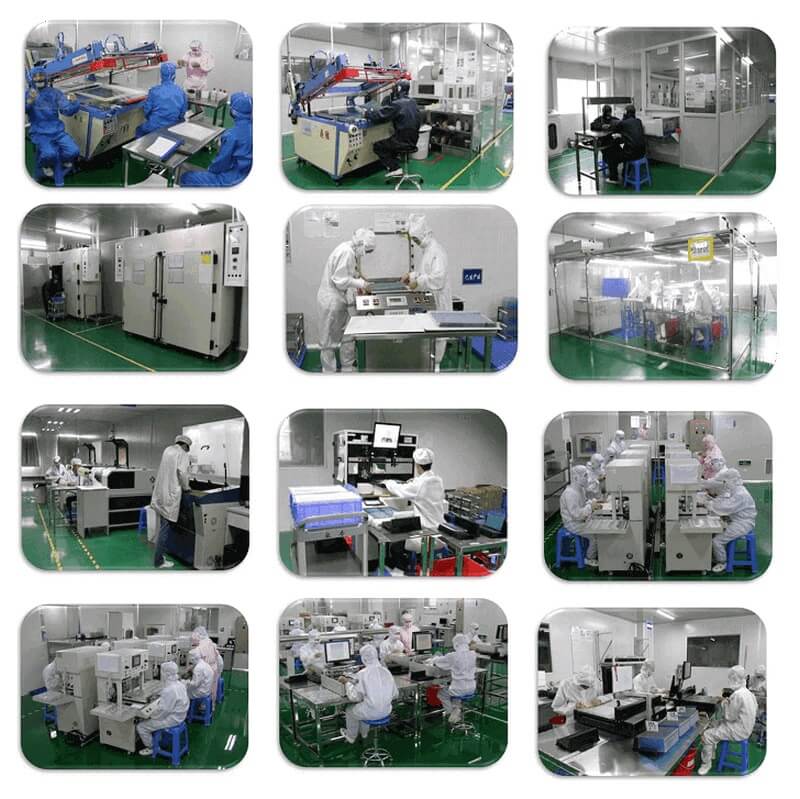
DINGTouch: Committed to continuous innovation and improvement of product quality to meet customers' high requirements and expectations.
DINGTouch is a manufacturer that provides high quality touch screen panels. Focus on the design, manufacturing and sales of touch screen panels, and are committed to providing customized solutions that satisfy customers.
DINGTouch: In the process of customizing touch screen panels, we focus on close cooperation and communication with customers. Understanding customers' needs and providing customized solutions will meet customers' individual needs. The company's products are favored by customers for their high quality and reliability, and provide them with the best touchscreen panel solutions.
At DINGTOUCH, we are the world's leading touchscreen manufacturer, helping businesses around the world take advantage of this exciting technology. For more information, please visit the home page now.
Find the DINGTouch technical team to achieve the success of your company's new project.
How to choose touch screen customization?
DINGTouch is a company specializing in the R&D and production of touch screen technology, headquartered in Shenzhen, China. As a professional touch screen supplier, DINGTouch is committed to providing high-quality, stable and reliable touch screen products to meet the diverse needs of customers. We continue to carry out technological innovation and product optimization to ensure that its touch screen products have good sensitivity, accuracy and durability.
In addition to the products themselves, we also focus on cooperation and communication with customers, and are committed to providing customized solutions and excellent after-sales services. Through continuous efforts to improve product quality and customer satisfaction, we have established a good reputation in the touchscreen industry and won widespread market recognition.
What DINGTOUCH can do:
• PCAP maximum size 65”
• Multi-touch (Touch screen can be customized to your needs.)
• Optical bonding service/air bonding
• LCD interface: HDMI/RGB/MIPI/LVDS/EDP, etc.
• PCAP interface: IIC/USB interface
• CTP can customize the cover glass surface treatment process AG (anti-glare), AR (anti-reflection), AF (anti-fingerprint), waterproof, and glove touch
• Supports 0.55 mm-12 mm coverslip touch.
• Support operating temperature: -40℃-90℃.
Dingtouch Industrial Capacitive Touch Screen Manufacturer
In conclusion, Dingtouch as a professional touch screen manufacturer with more than 10 years touch screen experience.We have many capacitive touch screen. Such as5 inch touch screen,7 inch touch screen,10.1inch touch screen,15 inch touch screen,15.6 inch touch screen,17 inch touch screen,18.5 inch touch screen,19 inch touch screen,21.5 inch touch screen,32 inch touch screen, However, we also welcome to customize your own touch screen . Contact our team today to learn what capacitive touch screen are best for our retail business needs.
Contact us NOW! sales@szdingtouch.com
CATEGORIES
CONTACT US
Contact: Dingtouch
Phone: +8615815536116
Tel: +8615815536116
Email: sales@szdingtouch.com
Add: Building A, Bailu Plaza, No. 48, Gonghe Industrial Road, Gongle Community, Xixiang Street, Baoan District, Shenzhen,China. 518126

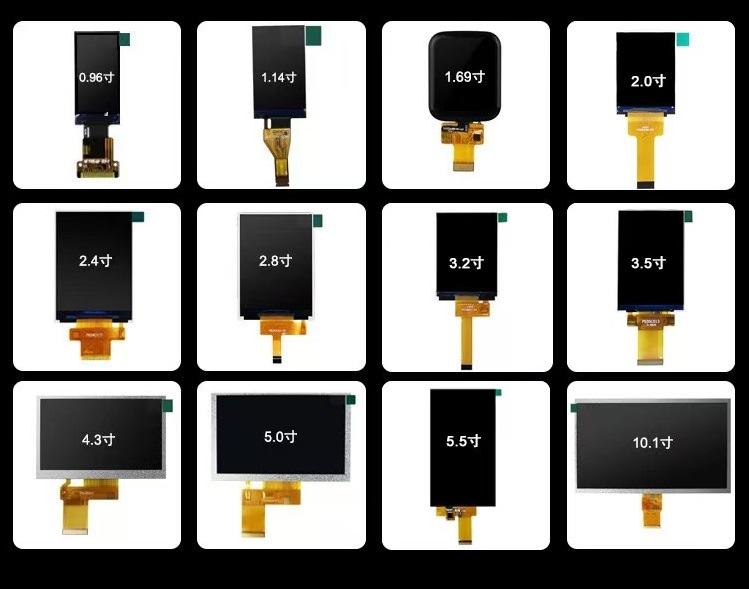
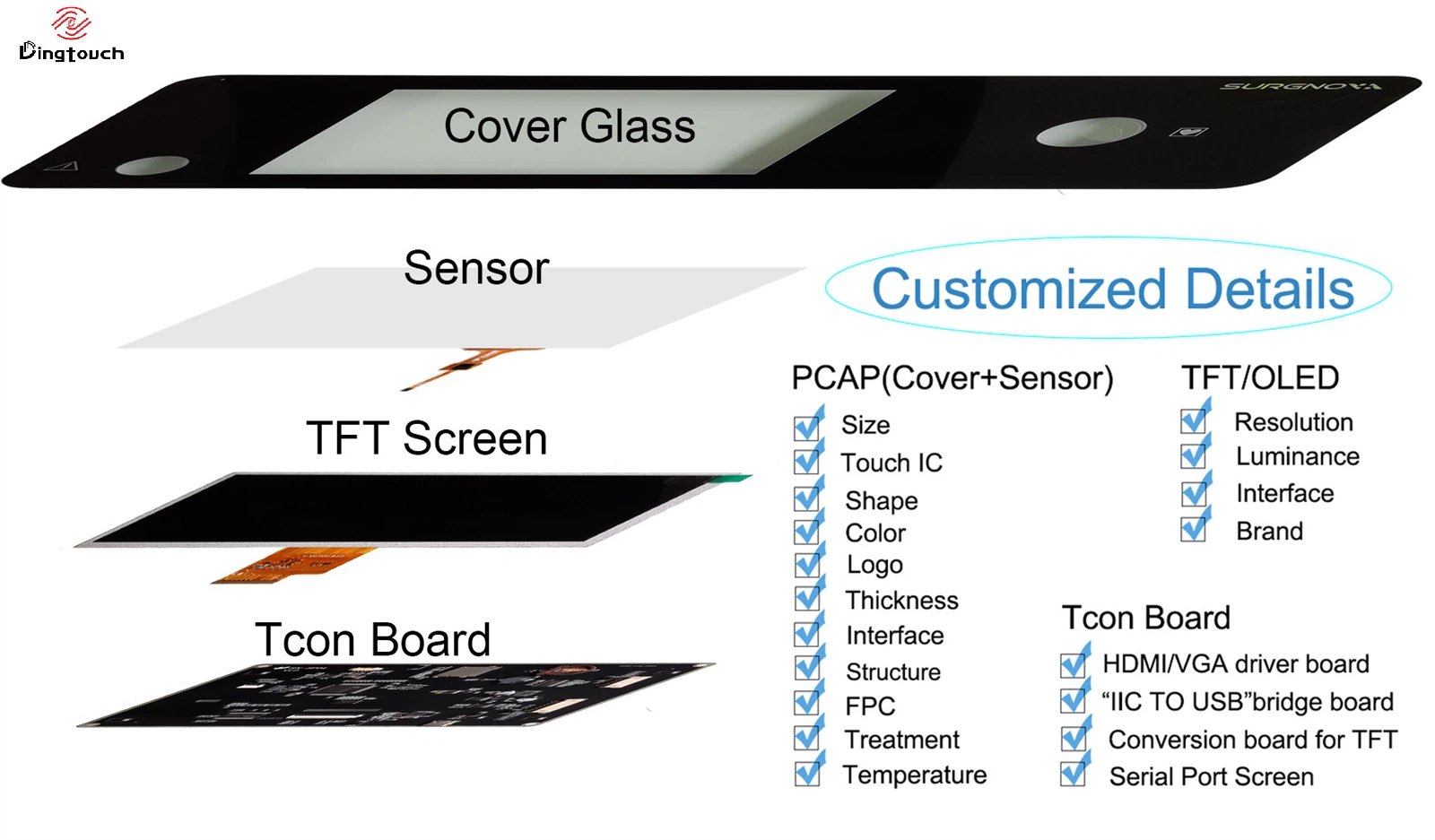

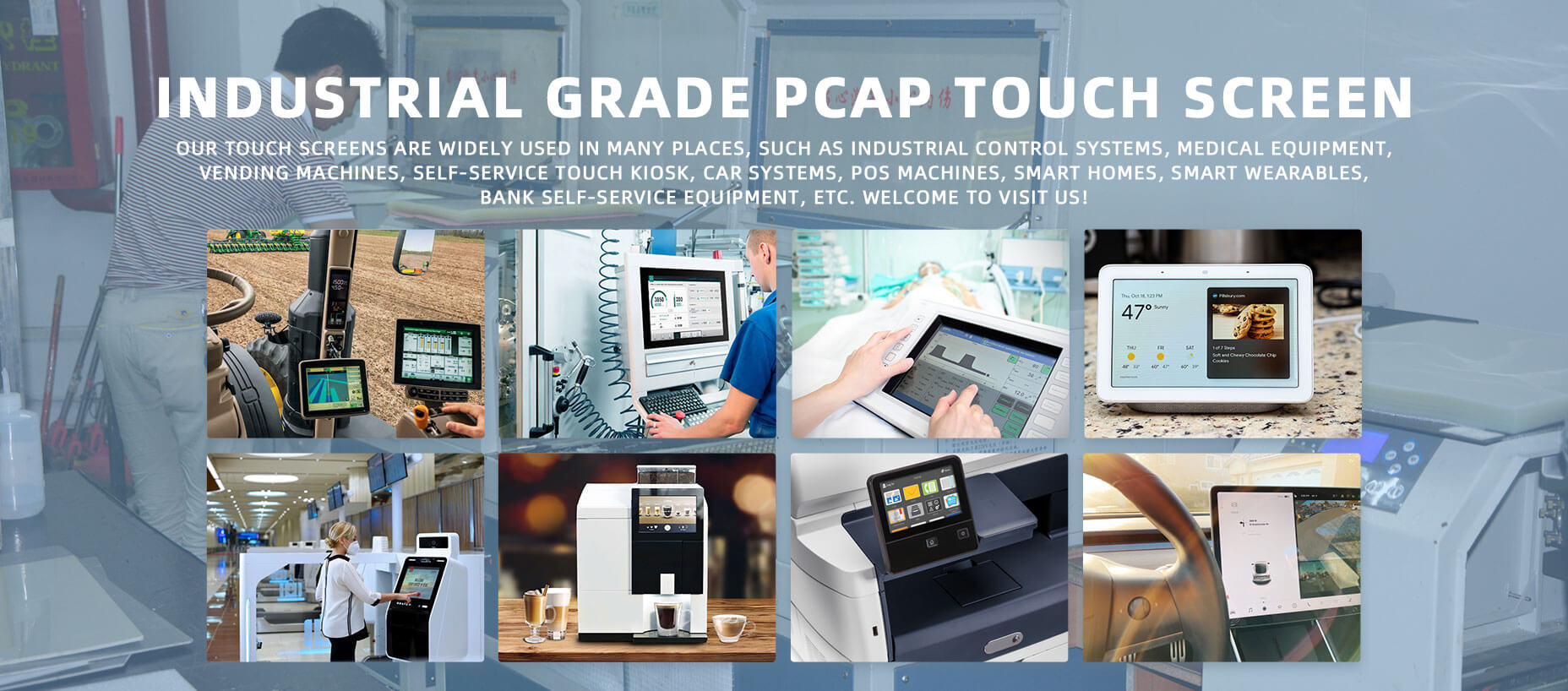
 Dingtouch
Dingtouch